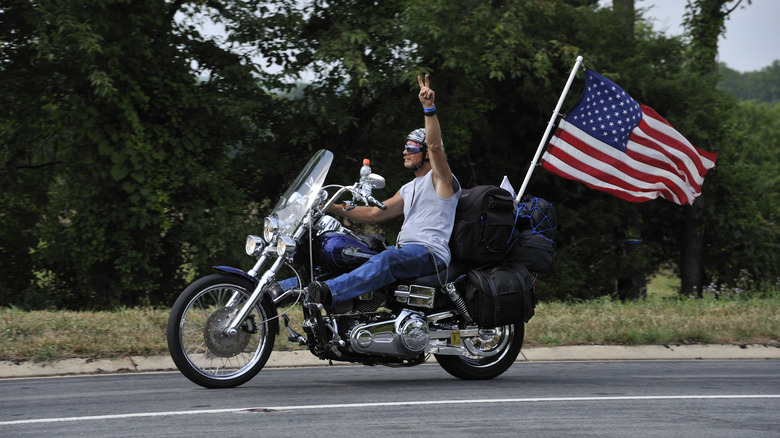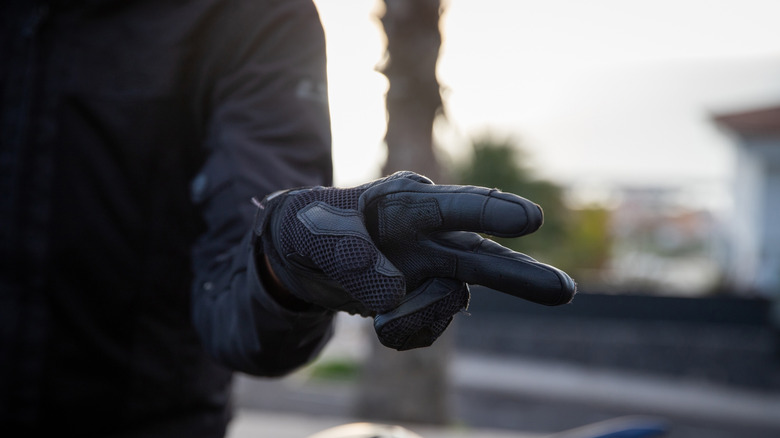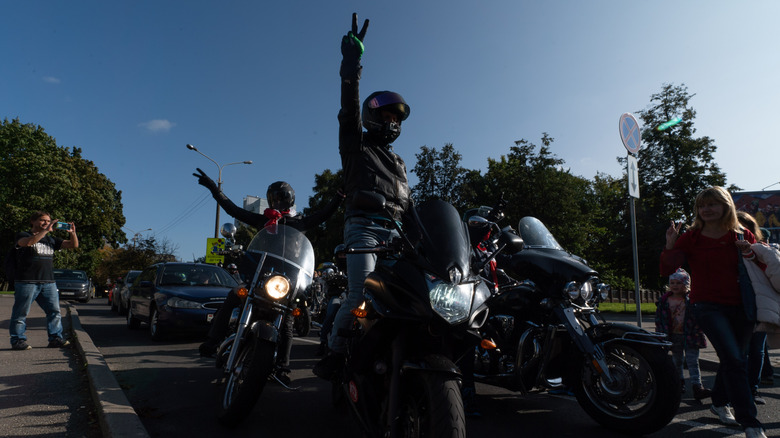Who Invented The Biker Wave? It Was (Probably) This Iconic Motorcycle Duo
When two motorcyclists pass each other on the road, they can often be seen exchanging a meaningful gesture that goes by the name "the biker wave" in the community. It's typically done by extending two fingers low and to the side — almost like a peace sign pointed toward the ground. Instead of using a simple hello, the biker wave is widely accepted for a reason. It is often believed to carry a sense of respect, friendship, and an unspoken promise to watch out for one another on the open road. So basically, the wave is a way riders acknowledge their shared passion and the risks that come with it, connecting them even if they've never met before.
The origin of the biker wave likely goes back to 1904, and Arthur Davidson and William Harley, the founders of Harley-Davidson. It's a little-known fact about Harley-Davidson that even seasoned bikers using the biker wave might not realize. It all started as a friendly greeting between two friends, but quickly grew into a tradition embraced by riders across brands, including Harley-Davidson and Indian. Today, the wave is a symbol of brotherhood among motorcyclists worldwide, reminding them that while riding may be thrilling, mutual respect is always key.
Popular theories around the origin of the biker wave
While the story of Harley and Davidson is the most widely shared origin — mainly for having its roots in the biker community itself — it's not the only one. Over time, other theories have emerged that offer different takes on where this iconic symbol may have come from. One popular theory links it to World War II, where the "V" sign stood for victory and later peace, becoming a common greeting carried on by veterans.
Another, less likely but still popular one, connects it to medieval knights raising their visors to identify themselves and show respect. While the knights lacked engines and leather jackets, the sense of support and brotherhood was the same. But whether the sign is born from biker culture or borrowed from older traditions, it has become a widely accepted part of the community. And just like other popular motorcycle hand signals, the hand wave remains popular and is still used today, many decades later.
Waving connects riders, but safety always comes first
While waving is a warm tradition, safety always comes first. Riders keep arm movements minimal to maintain control, and eye contact isn't necessary — the wave is usually seen from the corner of the eye. It's common courtesy to wave back if you see a greeting, but some people may not respond simply because they didn't notice or were too focused on the road.
Others might choose not to wave at all, and that's perfectly okay too. The road demands attention above all else. When stopped, riders can safely wave by extending their fingers while keeping their hands on the handlebars. The wave isn't tied to any particular motorcycle brand, although some riders may wave only to those on the same make. Ultimately, it's a simple, sincere gesture that creates a sense of brotherhood, bringing together riders of all backgrounds and experience levels. It's this shared respect that helps keep the riding community connected, no matter where they're from or headed.


